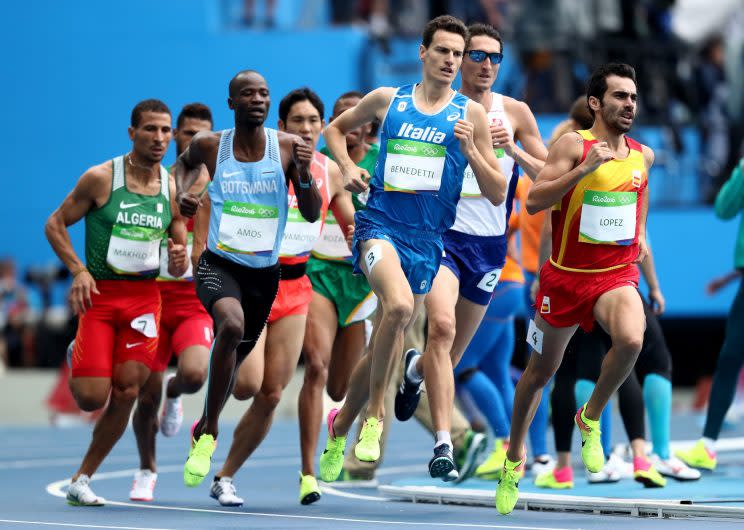Olympics mystery solved: Why do runners compete counterclockwise?

Medal count | Olympic schedule | Olympic news
Welcome to Olympic Mysteries Solved, where we answer your most pressing questions from this year’s Rio Olympic Games. Seen something you don’t understand? Drop us a line and we may solve your mystery in a future installment. Today’s mystery: Why do runners go counterclockwise?
It’s hard to get everyone in the world to agree on anything, but when they come together and compete in the Olympics, one thing is certain: They’ll be running races counterclockwise.
No one can quite identify a main reason track events are conducted this way, but counterclockwise races weren’t always the norm. Races at the 1896, 1900 and 1904 Olympics were ran in a clockwise fashion, potentially due to modern Olympics founder Pierre de Coubertin taking his cues from the standards at England’s tracks at the time.
Indeed, runners at the the influential running centers of Oxford and Cambridge continued going clockwise until the late 1940s. The Olympic standard changed, however, for the 1908 Games after athletes showed up and claimed they were at a disadvantage after training the reverse way back home. An international standard was adopted, and it’s been that way ever since.
Track isn’t the only sport that goes counterclockwise, of course. Horse racing, auto racing, speed skating, cycling and even baseball all follow the same path.
There are differing opinions on why each has adopted that same format. In track, it’s believed that it benefits the majority of runners that favor the right sides of their bodies. If you lead with your right foot, you are already automatically headed in a counterclockwise direction. It’s also preferable to have your stronger leg navigating the wider turns of a counterclockwise track.
What’s more, it’s also more aesthetically pleasing to spectators as runners race left to right as they reach the finish line, matching the way the western world reads.
One interesting point that has been made about this issue is that the Earth’s gravitational pull gives counterclockwise runners a slight advantage in the Northern Hemisphere while the opposite holds true in the Southern Hemisphere.
That effect didn’t make much of a difference to South Africa’s Wayde van Niekerk, who set a world record in Sunday night’s 400-meter final (despite also racing against the curved challenge of lane eight.)

 Yahoo Sport
Yahoo Sport 







































